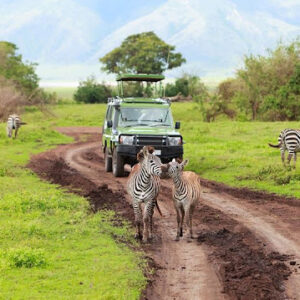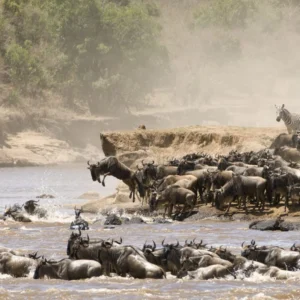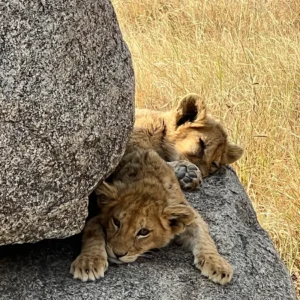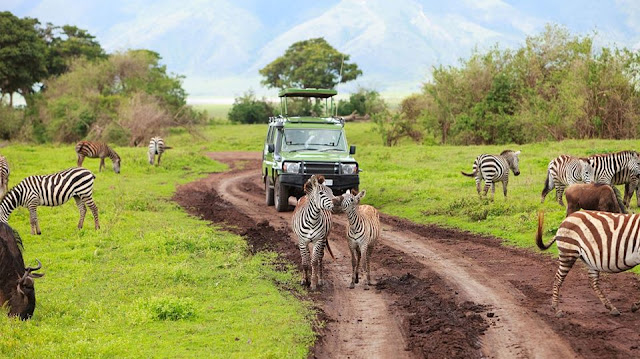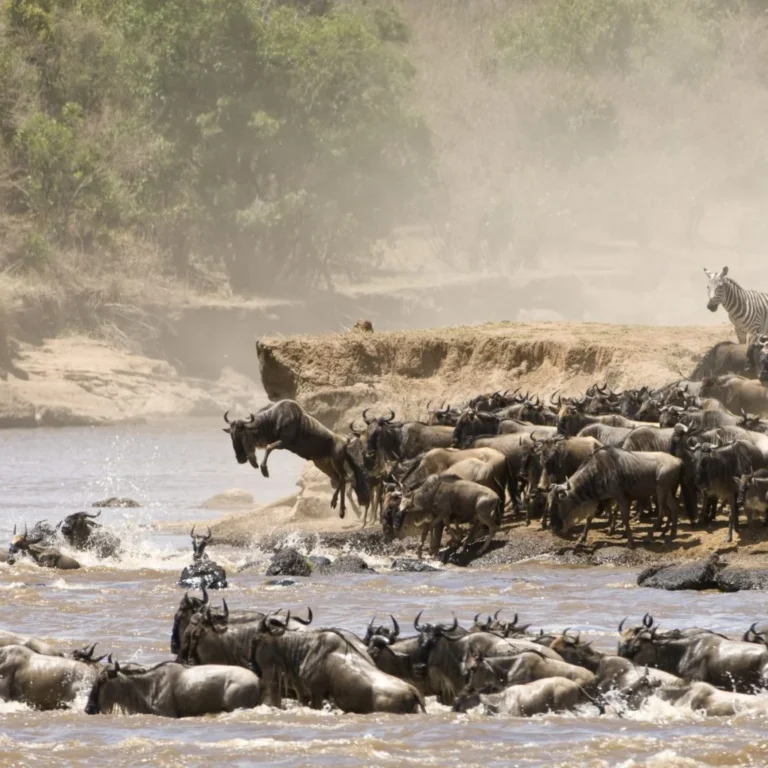At first glance, cheetahs and leopards may appear similar to the untrained eye. Both are sleek, spotted big cats that roam the savannas and forests of Africa. However, a closer look reveals striking differences in their physical characteristics, behavior, habitat, and hunting techniques. Leopards are actually the smallest of the cats but is stronger and bulkier than the cheetah.
Spots and coat colour aside, leopards are far bulkier, stronger and generally heavier than cheetahs, built for strength over speed or agility. Cheetahs, on the other hand, are the fastest land animal and have a need for speed, which means that they are light, agile, and stream-lined in their shape. Differences Between Leopard and Cheetah | Cheetah are taller and slender in build compared to a leopard which are stronger and bulkier. A cheetah built for speed and the fastest land mammal, reaching speeds of up to 113km/h (70mph). This comprehensive guide will help you distinguish between these two remarkable predators and appreciate their unique roles in the animal kingdom.
Physical Characteristics Cheetah vs Leopard: How to Spot the Difference
Body Shape and Build: Cheetah: The cheetah’s slender, lightweight body built for speed. It has a deep chest, long legs, and a flexible spine that acts as a spring during sprints. Its small, rounded head and streamlined body reduce wind resistance, making it the fastest land animal, capable of reaching speeds of up to 70 mph (112 km/h). Leopard: Leopards have a stockier and more muscular build, optimized for strength rather than speed. Their powerful limbs and robust shoulders allow them to climb trees while carrying heavy prey, a feat the cheetah cannot perform. Their bodies are compact, giving them incredible agility and stealth.
Coat and Spot Patterns: Cheetah: The cheetah’s coat is golden-yellow with small, solid black spots evenly distributed across its body. These spots do not form rosettes. A distinctive feature is the pair of black “tear lines” running from the inner corners of their eyes to their mouths, thought to reduce glare from the sun during hunts. Leopard: Leopards have a darker, more golden coat with irregular, rosette-shaped spots. These rosettes help them blend into the dappled light of their forested habitats, providing excellent camouflage.
Face and Tail: Cheetah: Cheetahs have small, rounded ears and a long, thin tail with black rings. The tail acts as a rudder, helping them maintain balance and make sharp turns during high-speed chases. Leopard: Leopards have larger, more rounded ears and a thicker tail that is almost as long as their body. Their tail helps them balance while climbing trees or navigating uneven terrain.
Behavioral Differences: Cheetah vs Leopard
Hunting Strategies: Cheetah: Cheetahs rely on speed and eyesight to hunt during the day, avoiding competition with nocturnal predators. They target smaller, fast-moving prey such as gazelles and impalas. Cheetahs employ a short burst of explosive energy to chase down their prey, usually lasting less than a minute. Once the prey caught, they quickly suffocate it before eating. Leopard: Leopards are ambush predators that rely on stealth and strength. They hunt mainly at night, using their exceptional night vision and keen senses to stalk prey. Once they pounce, they kill with a powerful bite to the neck and then drag their catch into a tree to protect it from scavengers.
Social Structure: Cheetah: Cheetahs are generally solitary, except for mothers with cubs and male coalitions, where brothers stay together for life. They are less territorial and often avoid confrontations with other predators. Leopard: Leopards are solitary and territorial. Each leopard maintains its own territory, which marked with scent markings and claw scratches. They are highly elusive and prefer to stay hidden, even in areas with high human activity.
Habitat and Distribution: Cheetah vs Leopard
Habitat Preferences: Cheetah: Cheetahs thrive in open grasslands and savannas, where their speed is an advantage. They need wide, unobstructed spaces to chase down prey. Leopard: Leopards are adaptable and can be found in a variety of habitats, including savannas, forests, mountains, and even semi-deserts. Their climbing ability allows them to live in areas with dense vegetation or rugged terrain.
Geographic Range: Cheetah: Cheetahs are primarily found in sub-Saharan Africa, with a small population in Iran. Their numbers are declining due to habitat loss and human-wildlife conflict. Leopard: Leopards have a broader range, spanning sub-Saharan Africa, parts of the Middle East, and Asia, including India, China, and Sri Lanka. They are listed as “vulnerable” but are more widespread than cheetahs.
Behavior Around Humans: Cheetah: Cheetahs are generally shy and non-aggressive toward humans. They avoid confrontation and are less likely to attack livestock, making them more tolerated by local communities. Leopard: Leopards are more elusive and potentially dangerous. Their ability to thrive in areas close to human settlements often brings them into conflict with people, especially when they target livestock.
Unique Adaptations: Cheetah vs. Leopard: What’s the Difference?
Speed vs. Strength: Cheetah: Speed is the cheetah’s ultimate weapon. Its lightweight frame, enlarged adrenal glands, and specialized respiratory system allow it to accelerate faster than most sports cars. However, cheetahs cannot sustain high speeds for long due to the risk of overheating. Leopard: Leopards are symbols of power and stealth. Their muscular build allows them to take down prey much larger than themselves. Their ability to climb trees with heavy prey showcases their incredible strength.
Vocalizations: Cheetah: Cheetahs cannot roar like other big cats. Instead, they communicate using a variety of sounds, including purrs, chirps, and hisses. Leopard: Leopards can roar, although their vocalizations are less frequent than lions. They also grunt, growl, and make a sawing sound to communicate.
Conservation Challenges: Cheetah vs. Leopard: What’s the Difference?
Cheetahs: Cheetah populations are critically endangered due to habitat loss. Human-wildlife conflict, and a lack of genetic diversity. Conservation efforts focus on protecting habitats, reducing human-animal conflicts, and promoting coexistence through community education and wildlife corridors.
Leopards: Leopards face threats from habitat destruction, poaching, and retaliatory killings. Their adaptability has helped them survive in human-dominated landscapes, but their population is still declining in many regions. Conservation programs include anti-poaching measures, habitat restoration, and coexistence strategies.
Cultural Significance: Cheetah vs. Leopard: What’s the Difference?
Both cheetahs and leopards hold significant cultural value. In ancient Egypt, cheetahs symbolized royalty were kept pets by pharaohs. Leopards often associated with strength and stealth in African. Folklore and are revered as symbols of courage and power.
Key Differences Cheetah vs Leopard at a Glance
| Feature | Cheetah | Leopard |
|---|---|---|
| Body Build | Slender and built for speed | Muscular and built for strength |
| Coat Pattern | Solid black spots | Rosettes (black spots with lighter centers) |
| Hunting Style | Diurnal, uses speed to chase prey | Nocturnal, uses stealth and ambush |
| Social Behavior | Males form coalitions; females solitary | Solitary and territorial |
| Habitat | Open grasslands and savannas | Forests, savannas, and mountains |
| Vocalization | Chirps, purrs; cannot roar | Roars, growls, and sawing sounds |
What is the difference between cheetah and leopard and jaguar
Cheetahs, leopards, and jaguars are distinct big cats with unique traits. Cheetahs are slender, built for speed, and have solid black spots and tear lines on their faces. Leopards are muscular with rosette-patterned coats, excelling in climbing and ambush hunting. Jaguars, the largest, have robust builds and rosettes with central spots, thriving in South American jungles as powerful swimmers. While cheetahs dominate open grasslands, leopards and jaguars adapt to diverse habitats, showcasing remarkable strength and stealth.
Difference between cheetah and leopard and jaguar and tiger
Cheetahs, leopards, jaguars, and tigers differ in build, markings, and behavior. Cheetahs are slender with solid black spots and are built for speed. Leopards have golden coats with rosettes and excel in tree climbing. Jaguars, stockier with larger rosettes and central spots, are powerful swimmers. Tigers, the largest, are striped and prefer dense forests or grasslands. While cheetahs rely on speed, leopards and jaguars use strength and stealth, and tigers dominate with sheer power and versatility.
Interesting facts about Cheetah vs. Leopard
Cheetahs and leopards, while both big cats, have fascinating differences. Cheetahs are the fastest land animals, reaching speeds of 70 mph, with distinct tear-like facial markings and solid black spots. Leopards, stronger and more versatile, have unique rosette-shaped spots and excel at climbing trees, often dragging their prey up to avoid scavengers. Cheetahs hunt by day using speed, while leopards hunt by night using stealth. These majestic predators reflect the diverse adaptations of the wild.
Can you spot the difference between a jaguar, leopard, lion, and cheetah?
Jaguars have powerful, stocky builds and rosettes with central spots. Leopards are leaner with rosettes lacking central spots. Lions, known for their majestic manes, are social and larger than the others. Cheetahs, the fastest, boast tear marks and solid black spots. Each cat has unique traits, habitats, and behaviors, making them fascinating to distinguish in the wild.
Final Thoughts: Cheetah vs Leopard
Cheetahs and leopards are remarkable predators with distinct traits that set them apart. The cheetah’s unparalleled speed and gentle demeanor contrast with the leopard’s raw power and cunning stealth. Understanding their differences enhances our appreciation of these majestic cats and underscores the importance of conservation to ensure their survival in the wild.
These unique felines remind us of nature’s diversity and resilience, challenging us to protect the ecosystems that sustain them. Whether marveling at the cheetah’s sprint or the leopard’s tree-climbing prowess, both are icons of the animal kingdom that deserve our admiration and care.


